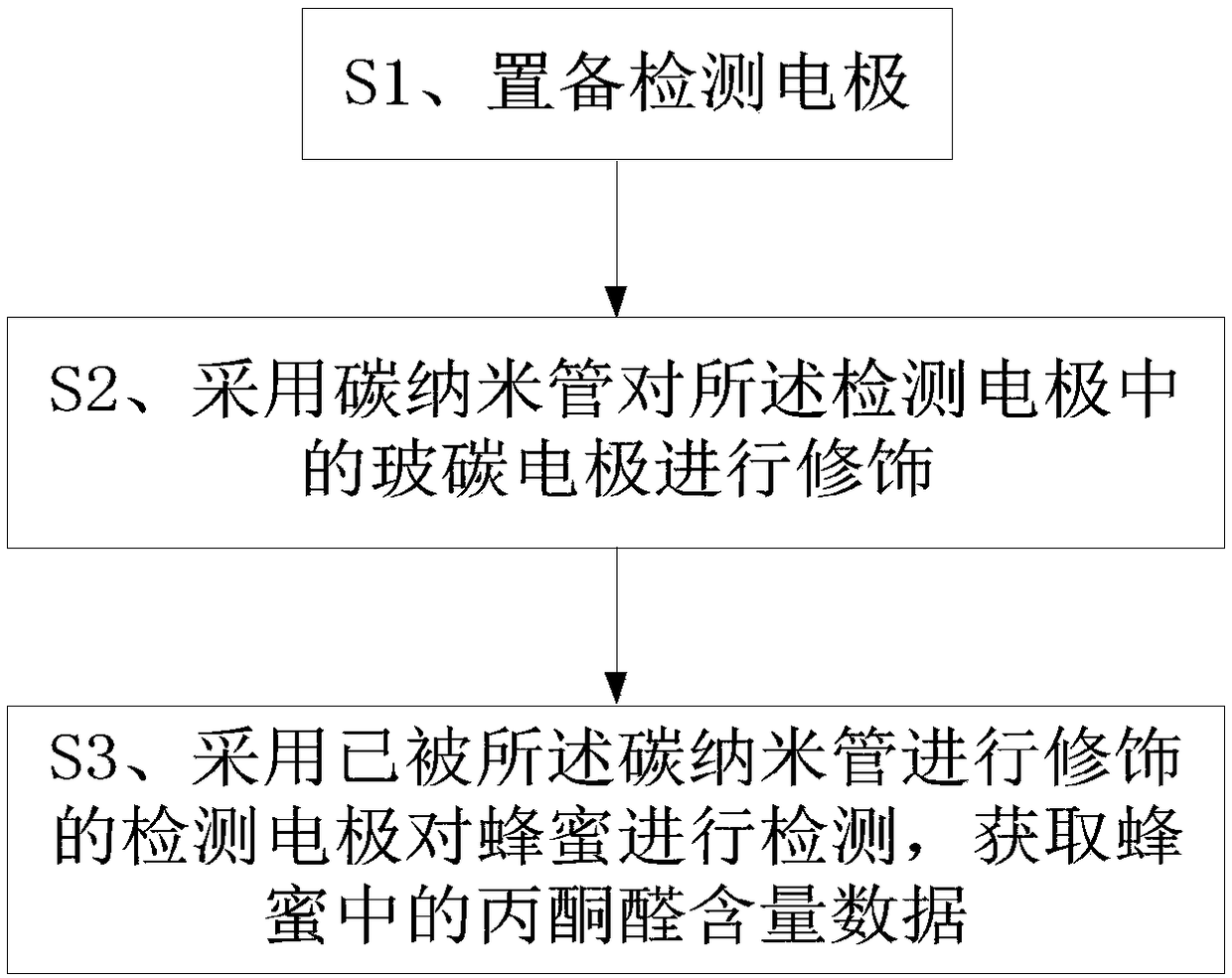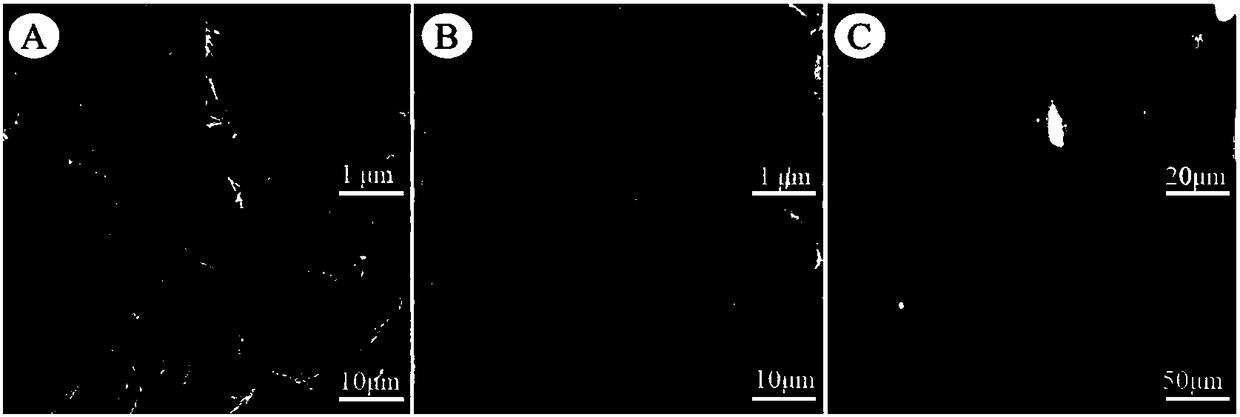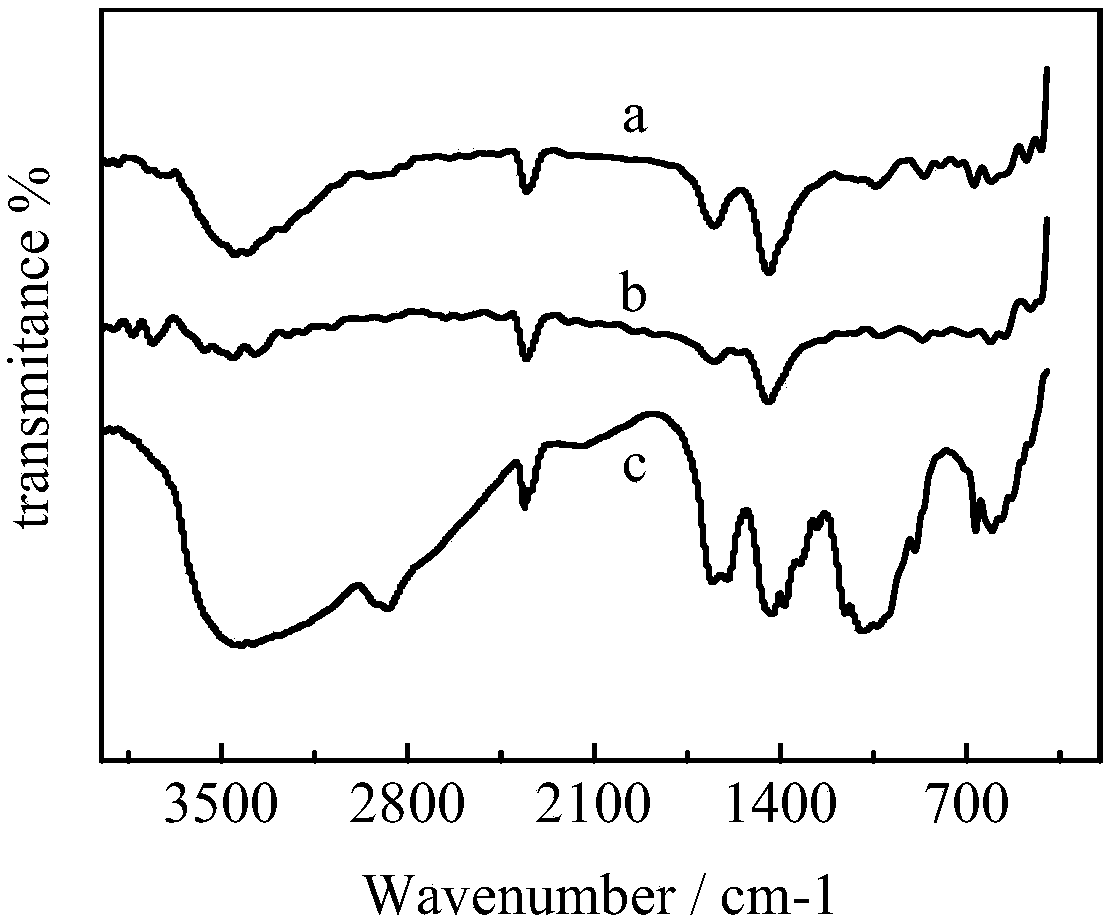Detection method and detection device for methylglyoxal content in honey
The technology of a detection method and detection device, which is applied in the field of bee breeding, can solve the problems of unsuitable promotion, high detection cost, and long time-consuming detection process, and achieve the effects of good repeatability and stability, high sensitivity, and low detection limit
- Summary
- Abstract
- Description
- Claims
- Application Information
AI Technical Summary
Problems solved by technology
Method used
Image
Examples
Embodiment 1
[0042] Such as figure 1 Shown, the detection method of methylglyoxal content in the honey of the present invention comprises the steps:
[0043] S1, prepare detection electrode, in the present embodiment, described detection electrode is a three-electrode system, and it comprises: the glassy carbon electrode (GCE) as working electrode, the saturated KCl calomel electrode (SCE) as reference electrode and as auxiliary The platinum wire (Pt) of electrode; Specifically, described step S1 comprises:
[0044] S11. Cover the bare electrode surface of the glassy carbon electrode with 0.05 μm Al on the suede 2 o 3 The grinding powder is ground until smooth, then rinsed with deionized water;
[0045] S12. Use deionized distilled water, absolute ethanol, and deionized distilled water to perform ultrasonic cleaning on the bare electrode obtained in step S11. Each treatment process takes 4-10 minutes (preferably 5 minutes), and then at room temperature dry;
[0046] S2, using carbon n...
Embodiment 2
[0055] The only difference between this example and Example 1 is that in step S21, 0.15 mg mL -1 Carboxymethylcellulose solution and 0.8mg mL -1 Carboxymethylcellulose-multi-walled carbon nanotube (CMC-fMWCNT) suspension; in step S22, prepare 0.15% chitosan (CS) solution; in step S23, prepare mixed droplets in 3 μL step S22 on the glassy carbon electrode and dried; in step S31, adjust the pH of the diluted honey sample solution to 9 with NaOH solution.
Embodiment 3
[0057] The only difference between this example and Example 1 is that in step S21, 0.45mg mL -1 Carboxymethylcellulose solution and 1.2mg mL -1 Carboxymethyl cellulose-multi-walled carbon nanotube (CMC-fMWCNT) suspension; in step S22, prepare 0.25% chitosan (CS) solution; in step S23, prepare mixed droplets in 8 μL step S22 on the glassy carbon electrode and dried; in step S31, adjust the pH of the diluted honey sample solution to 11 with NaOH solution.
[0058] Carbon nanotubes (CNTs), as one of the common carbon nanomaterials, have good electrical, chemical, mechanical and structural properties, and can be used to modify electrodes very well. Owing to their many excellent properties, such as high electrical conductivity, large active surface area, easy-to-change surface, catalytic activity, excellent chemical stability, and good biocompatibility, they have been widely used in electrochemical sensors nowadays.
[0059] Carboxymethylcellulose (CMC) is an important cellulose ...
PUM
 Login to View More
Login to View More Abstract
Description
Claims
Application Information
 Login to View More
Login to View More - R&D Engineer
- R&D Manager
- IP Professional
- Industry Leading Data Capabilities
- Powerful AI technology
- Patent DNA Extraction
Browse by: Latest US Patents, China's latest patents, Technical Efficacy Thesaurus, Application Domain, Technology Topic, Popular Technical Reports.
© 2024 PatSnap. All rights reserved.Legal|Privacy policy|Modern Slavery Act Transparency Statement|Sitemap|About US| Contact US: help@patsnap.com










